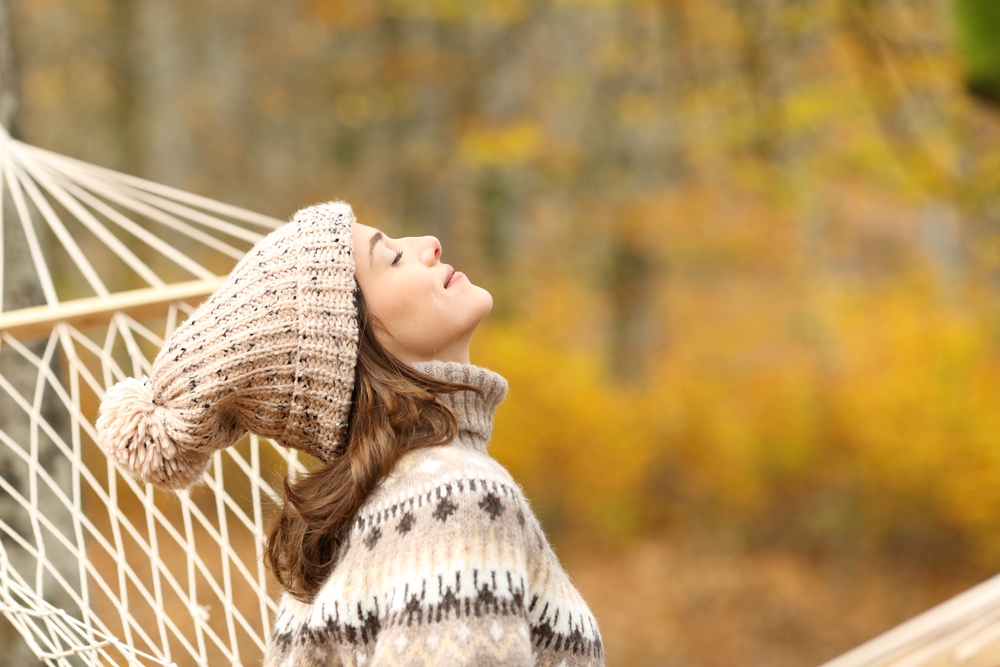Winter can often bring a sense of heaviness or disconnection, making it harder to stay grounded. Mindfulness practices are a great way to stay present, calm, and focused during the colder months. By taking time to reconnect with yourself, you can counteract the stress and chaos that winter often brings. These practices not only promote mental clarity but also help boost emotional resilience. In this article, we’ll explore simple mindfulness techniques to help you stay balanced and centered this winter.
Breathing Exercises

Simple breathing exercises can quickly calm the mind and body. Try the 4-7-8 technique: inhale for 4 counts, hold for 7, and exhale for 8. This helps lower stress levels, relax the nervous system, and reduce anxiety. The act of focusing on your breath pulls you out of overwhelming thoughts and brings you back to the present. Doing this for just a few minutes each day can significantly improve mental clarity and emotional stability.
Body Scan Meditation

A body scan is a great way to check in with yourself. Start at your toes and slowly move up through each part of your body, paying attention to any areas of tension. This helps you tune into your physical sensations and release any built-up stress. Especially during winter, when you might feel more lethargic or stiff, a body scan encourages relaxation and fosters a sense of warmth and presence. It’s a perfect practice before bed for better sleep.
Mindful Walking

Take time to walk slowly and mindfully, paying attention to each step and the sensations in your body. Whether it’s a short stroll outside or a walk around your living room, this practice encourages presence. Winter walks in nature can be particularly grounding as you connect with the earth beneath your feet and the crisp air around you. Slow down to really experience the environment—feel the cold, notice the sounds, and appreciate the moment. It’s a way to refresh your mind and body, even on the darkest days.
Gratitude Journaling

Winter can sometimes feel gloomy, but practicing gratitude shifts your focus to what’s positive in your life. Take a few minutes each day to write down three things you’re grateful for. This simple habit can uplift your mood and remind you of the blessings you may overlook in the hustle and bustle of the season. Gratitude journaling helps create a positive mindset and strengthens emotional resilience. Even small things, like a cozy cup of tea or a warm sweater, can bring a sense of contentment.
Visualization

Visualization is a powerful technique to calm your mind and stay focused. Picture a peaceful place, like a sunlit beach or a quiet forest, to transport yourself mentally away from stress. During the winter, it’s easy to feel drained or stuck indoors, so visualizing a calming setting can offer a mental escape. It doesn’t matter if the scene is real or imagined; the key is to engage all your senses and immerse yourself in the experience. Regular practice can help you feel more grounded and resilient throughout the season.
Candle Gazing

This simple mindfulness practice involves focusing on the flickering flame of a candle. Its warm light can serve as a soothing focal point, especially during the long, dark winter nights. Gaze at the flame without distraction, and let your mind relax into the simplicity of the moment. Candle gazing helps calm overactive thoughts and promotes stillness. It’s a gentle practice that can be done in the evening to wind down before bed.
Mindful Eating

Eating mindfully is an excellent way to stay present, especially during the holiday season when food is abundant. Focus on the taste, texture, and smell of each bite. This practice encourages a deeper appreciation for food and can help prevent overeating. In winter, when comfort foods often take center stage, mindful eating fosters healthier habits and promotes body awareness. Savoring each bite also helps bring you back into the moment, making meals more enjoyable.
Nature Connection

Even in winter, nature offers grounding opportunities. Bundle up and spend time outdoors, even if it’s just for a few minutes. The cold air and quiet surroundings can help you feel more connected to the earth. Take note of the stillness in nature—how trees stand bare and the world slows down. By embracing the winter landscape, you create space for reflection and mindfulness.
Listening to Winter Sounds

Pay attention to the natural sounds of winter: the crunch of snow underfoot, the rustle of bare branches in the wind, or the quiet hum of a heating system. By listening attentively, you anchor yourself in the present moment and can feel more grounded. Winter often quiets the outside world, making it a perfect time to practice deep listening. These sounds, though subtle, can have a calming effect on your nervous system. Taking time to truly hear them fosters mindfulness and enhances your connection to the season.
Mindful Tea Drinking

Tea drinking is a warm, comforting ritual perfect for winter. Take a moment to prepare your tea mindfully: notice the steam rising, the aroma, and the warmth of the cup in your hands. Sipping slowly, savor the taste, and focus on how the warmth spreads through your body. This practice helps slow down your day and centers your mind, creating a sense of tranquility. It’s a simple but powerful way to bring mindfulness into your routine.
Mindful Stretching

Stretching helps release physical tension, particularly in the cold months when muscles can feel stiff. Practice stretching slowly, paying close attention to each movement and how your body feels. Focus on your breath as you lengthen each muscle, releasing any tension with each exhale. This can be particularly beneficial after sitting for long periods or during cold mornings when you might feel stiff. Mindful stretching not only promotes flexibility but also improves mental clarity.
Savoring the Moment

Winter can be a time for reflection, but it’s important to savor the present moment as well. Whether you’re sipping your morning coffee, watching the snowfall, or reading a good book, take a few extra seconds to fully immerse yourself in the experience. By really feeling and appreciating what’s happening right now, you cultivate mindfulness. This practice fosters joy and satisfaction, even on the colder, quieter days. Savoring small moments can make winter feel more meaningful and fulfilling.
Yoga for Mindfulness

Yoga is an excellent way to ground yourself, especially when it’s cold outside. Find a cozy spot, roll out your mat, and practice slow, mindful movements. Focus on how your body feels in each pose, and use your breath to guide the flow of your practice. During winter, when energy levels can dip, yoga helps invigorate and balance the body. A regular yoga practice enhances mindfulness and allows you to tune into your body’s needs.
Mindful Journaling

Writing your thoughts down can help clear mental clutter and promote mindfulness. Take a few moments to reflect on your day, your emotions, or your intentions for the winter season. Mindful journaling encourages you to be present with your thoughts and emotions without judgment. It’s a simple practice that fosters self-awareness and helps you track your emotional growth. Whether you’re writing about small daily events or larger life goals, journaling helps you stay connected to your inner self.
Focusing on Warmth

In winter, it’s easy to feel physically or emotionally cold. Practice bringing awareness to warmth—whether it’s the warmth of a blanket, a cup of hot cocoa, or the glow of your fireplace. By tuning into these sensations, you counteract the cold and connect with comfort. This practice can also help calm feelings of isolation that sometimes accompany winter. Focusing on warmth, both literal and metaphorical, helps to restore balance and positivity.
Digital Detox

Winter is the ideal time to disconnect from screens and reconnect with yourself. Set aside regular periods of time where you turn off your devices and focus on being present. Whether it’s reading a book, spending time with loved ones, or simply relaxing in silence, a digital detox helps reduce distractions and stress. Disconnecting from constant notifications allows your mind to rest and recharge. It’s a vital practice for maintaining emotional well-being during the winter months.
This article originally appeared on UnifyCosmos.
More from UnifyCosmos
20 Luxurious Wellness Resorts for a Relaxing Escape

Taking a break from the hustle and bustle of everyday life is essential for maintaining balance and well-being. Wellness resorts offer the perfect escape, where you can unwind, recharge, and rejuvenate both body and mind. Read More
Uncovering 22 Myths About Traditional Medicine

Traditional medicine has been used for centuries, offering natural remedies and holistic approaches to health. However, many misconceptions surround these age-old practices, leading to confusion and skepticism. Read More
21 Iconic Castles and Fortresses That Time Forgot

Throughout history, countless castles and fortresses have stood as symbols of power and protection. While some remain popular landmarks, others have faded from memory, leaving behind ruins and forgotten tales. Read More
Leave a Reply